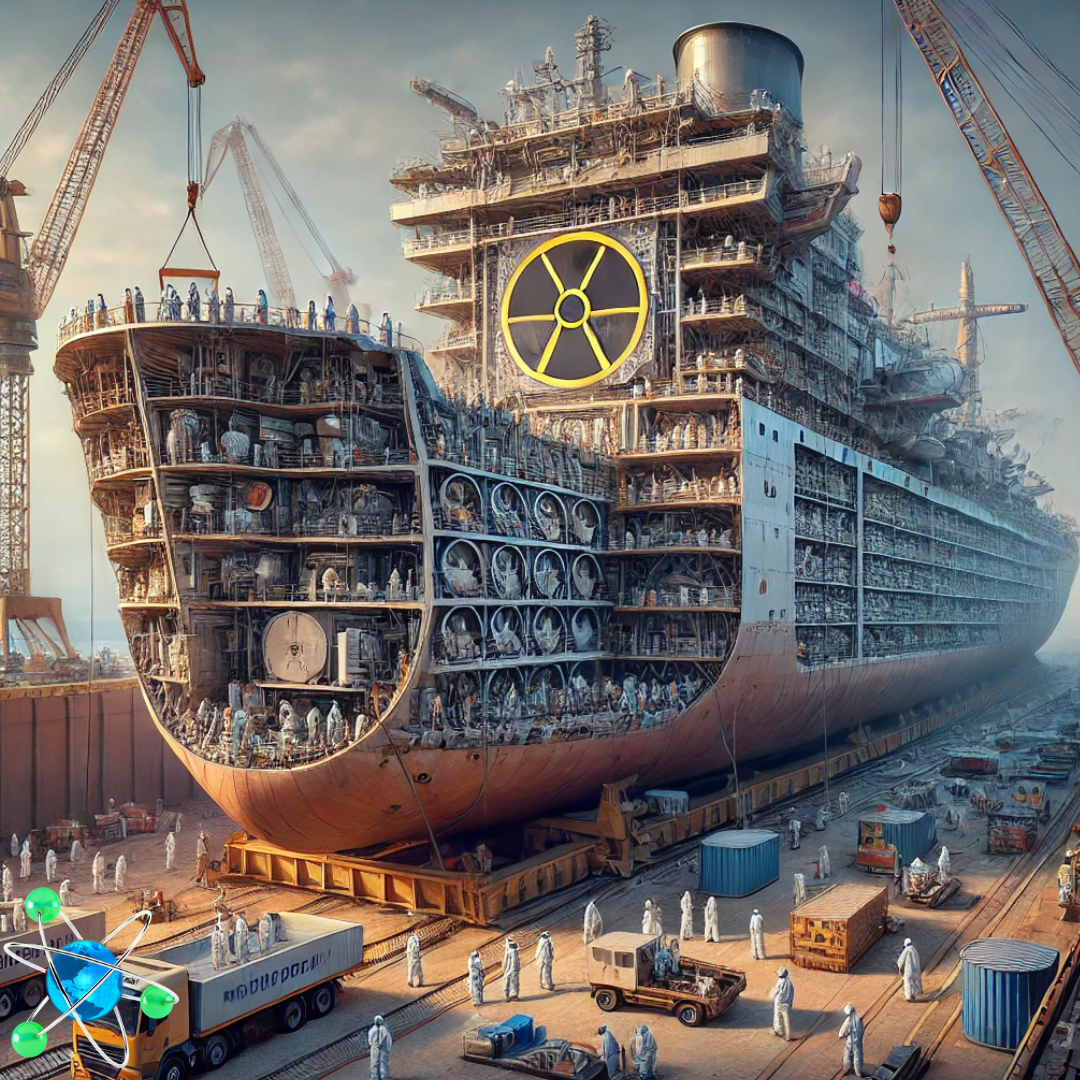
- Russia has dismantled 202 nuclear-powered submarines, including 82 from the Far East, successfully removing all used nuclear fuel and establishing coastal infrastructure to eliminate radiation hazards.
- In a significant operation, Rosatom completed the dismantling of the Lepse, a ship that stored 639 damaged nuclear fuel assemblies. The used fuel was securely contained and sent for reprocessing, showcasing Russia’s commitment to safe nuclear waste management and environmental protection.
Russia has successfully dismantled 202 nuclear-powered submarines, including 82 from its Far East region. This significant achievement marks a crucial step in addressing the effects of nuclear waste.
All used nuclear fuel has been removed from the region, ensuring that no spent fuel or hazardous facilities remain in the coastal areas designated for disposal. The establishment of coastal infrastructure throughout the country has facilitated the safe elimination of this accumulated radiation-hazardous legacy. According to Rosatom, the Russian state atomic energy corporation, “The Soviet nuclear legacy has been completely eliminated in the region. A long-standing serious environmental problem has been solved.”
At a ceremony commemorating ten years since the first use of the long-term storage site for reactor compartments at Razboynik Bay in Russia’s Far East, Alexander Abramov of Rosatom emphasized the ongoing commitment to safe nuclear waste management. Reactor compartments from dismantled submarines have been placed in specially constructed containers at a secure land site, where they are monitored for radiation and maintained to ensure the integrity of their anti-corrosion protective coatings.
These cleanup efforts have been bolstered by international support, particularly from Japan, highlighting the collaborative nature of environmental protection initiatives.
In a landmark operation last year, Rosatom completed a decade-long project to dismantle the ship Lepse, which had played a pivotal role in refueling the nuclear icebreaker fleet from 1963 to 1981 and subsequently served as a storage facility for used fuel and radioactive waste. The Lepse was relocated in September 2012 to the Nerpa shipyard in Snezhnogorsk in the Murmansk region for dismantling. The ship contained 639 damaged and distorted used nuclear fuel assemblies that posed a significant radiological hazard to the region.
After careful assessment, a decision was made to cut up the ship into two large storage packages. One of these packages contained the used fuel, which was moved into a containment shelter designed for defueling operations and equipped with specialized removal tools. The fuel was subsequently sent for reprocessing at the Mayak Chemical Combine in the Urals. The final section of the vessel, its bow, was placed in the Sayda-Guba reactor compartment storage facility.
These extensive efforts in dismantling nuclear submarines and managing nuclear waste demonstrate Russia’s commitment to environmental safety and public health. As the country moves forward with its nuclear waste disposal methods, these initiatives should help to alleviate concerns about the management of nuclear waste in the future.
